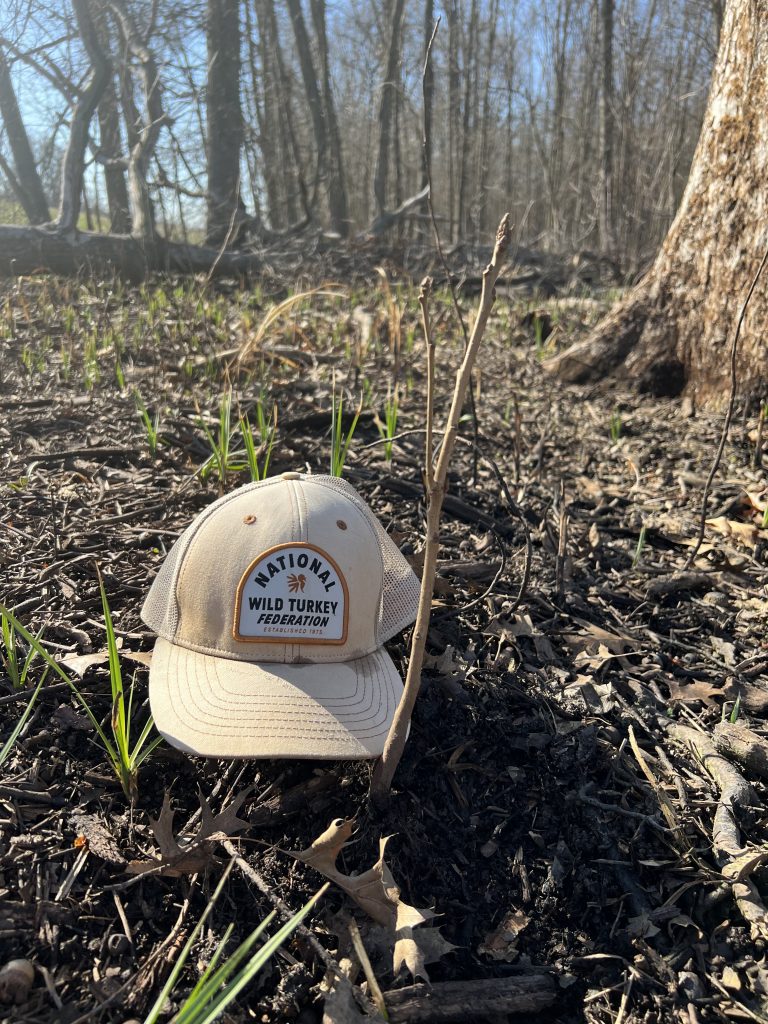NWTF and Partners Plant Over 53,000 Trees on the Shawnee National Forest
After over eight hours of driving and some heavy lifting, NWTF Forester Chase Seals and a group of Shawnee National Forest staff returned from the Mason State Tree Nursery to southern Illinois with a trailer containing 53,950 trees, all set to boost the overall health of the Shawnee. What lay ahead of them was a weeks-long, sunup-to-sun-down tree-planting marathon.

"We are lucky to have hired a good contractor to help with the plantings, but it was long days for sure," said Seals, who manages the NWTF's stewardship agreements on the national forest. "Overall, it took six full days to get all 53,950 trees in the ground."

Throughout the week, the team planted trees in two distinct areas, one upland planting and one bottomland planting. The bottomland planting encompassed a 122-acre area adjacent to the Big Muddy River Levee. This planting was done to rehab the existing pin oaks and ash stand, which have been vastly reduced due to insect infestations.
The ash borer epidemic completely wiped out the ash ecosystem in the bottomlands, evident in the large canopy gaps within the area. Likewise, gall wasps are beginning to impact the existing pin oak species negatively.
“Parasitic wasps inject young tree branches with growth-regulating chemicals that cause the formation of galls (abnormal tissue growth),” Seals said. “These galls harbor the wasp’s larvae, which emerge two to three years later as adults. These galls often kill the branch past where the tree is infected and yield a decrease in canopy size. In most cases, this infestation is not too harmful to the trees, but in southern Illinois, we are seeing gall infestations so bad that the trees are dying off after multiple years due to their canopy being severely reduced.”
Luckily, the gall wasps do not appear to impact white oak species and many other red oaks. The 122-acre planting consisted of trees that would mimic the native bottomland hardwood ecosystem while also being more resistant to the insect infestation plaguing the area. Trees planted included overcup oak, swamp white oak, swamp chestnut oak, cherrybark oak, bur oak, pecan and bald cypress.
The second planting in the uplands of the national forest was a smaller 14-acre planting designed as an experiment.
“We underplanted a small pine stand to establish oaks before a future thinning operation,” Seals said. “The experiment will assess oak survival post-harvest or through a timber harvest. We planted the stand dense on a 9-by-9 (foot) spacing, about 538 trees to the acre. The hypothesis is that the oaks will establish and the harvest operation will have a minor impact on the young oaks. If this holds, it will likely be a future silviculture practice here on the Shawnee to convert the non-native pine stands back to the native oak ecosystem.”
Both of the tree-planting projects were made possible thanks to a generous grant from the Arbor Day Foundation.
The NWTF originally applied for the grant in 2020 and was awarded $26,900; however, when it came time to plant, due to inflation, the price for trees had gone up significantly. The Arbor Day Foundation stepped up and contributed another $8,000 to ensure the NWTF and the Forest Service achieve their original plans.
The tree plantings are part of a larger agreement on the national forest, dubbed the Buttermilk Hill Wildlife Stewardship Agreement. The agreement is a multi-pronged forest health restoration project to restore the forest's native oak-hickory ecosystem.
Various management practices, such as timber stand improvement, invasive species control and mastication, have enhanced almost 900 acres of the forest. And thanks to the 136 acres from the recent tree plantings, the total now is over 1,000 acres enhanced.
The work has far-reaching benefits, and wild turkeys are noticing.
“It's a pretty great feeling when you see a turkey or someone texts you a picture of a turkey in an area where we've done work,” Seals said.

The NWTF has another stewardship agreement on the Shawnee called the Log Mark Pine Stewardship Project, which is also a multi-purposed project that includes a variety of forest management practices. Work through this agreement is benefitting the Little Cache Reservoir Area and Cretaceous Hills area of the national forest. To date, the NWTF and partners have completed 1,135 acres of forest stand improvement and invasive species control work through this additional agreement.
The 280,000-acre national forest is the state's largest piece of public land and is heavily used for outdoor recreation. The work through the collaborative efforts of the NWTF, the Forest Service, Arbor Day Foundation and Illinois Extension Forestry is increasing critical ecosystems for the wildlife that call them home and improving overall recreation ability for outdoor enthusiasts in the Prairie State.